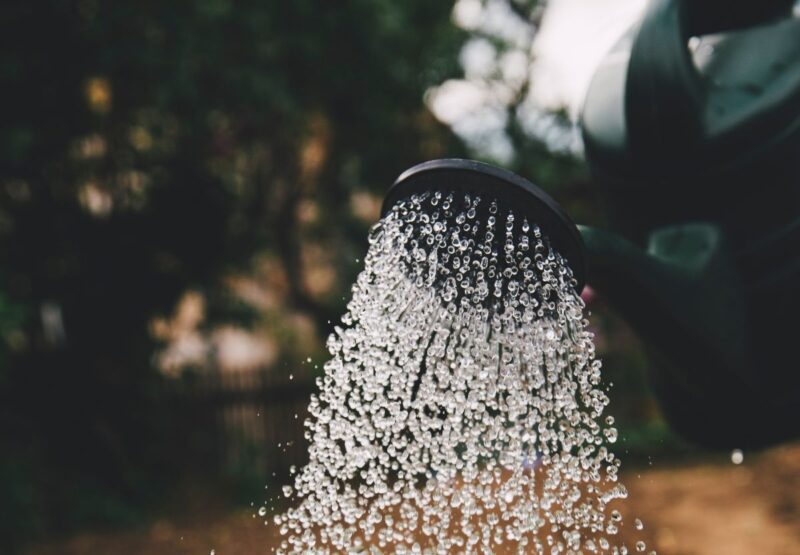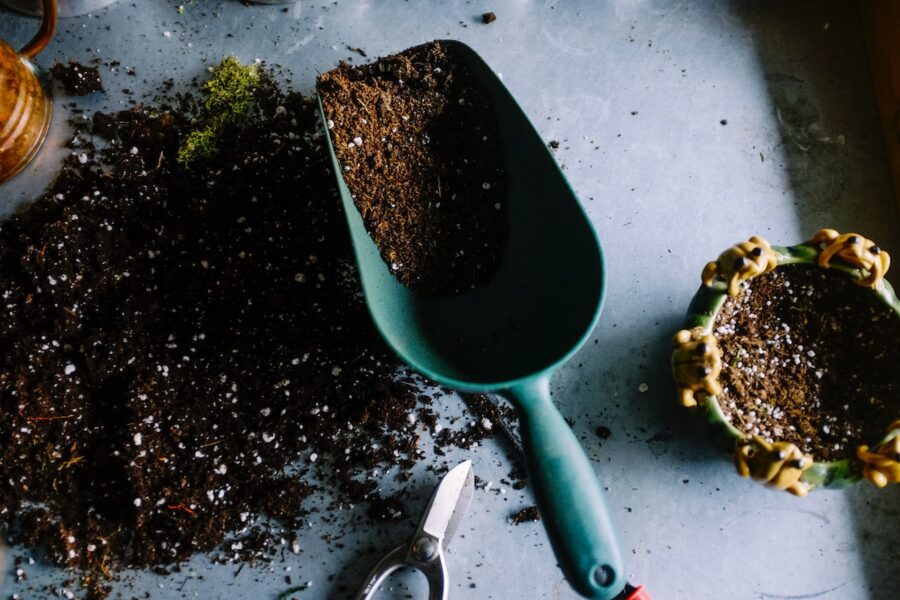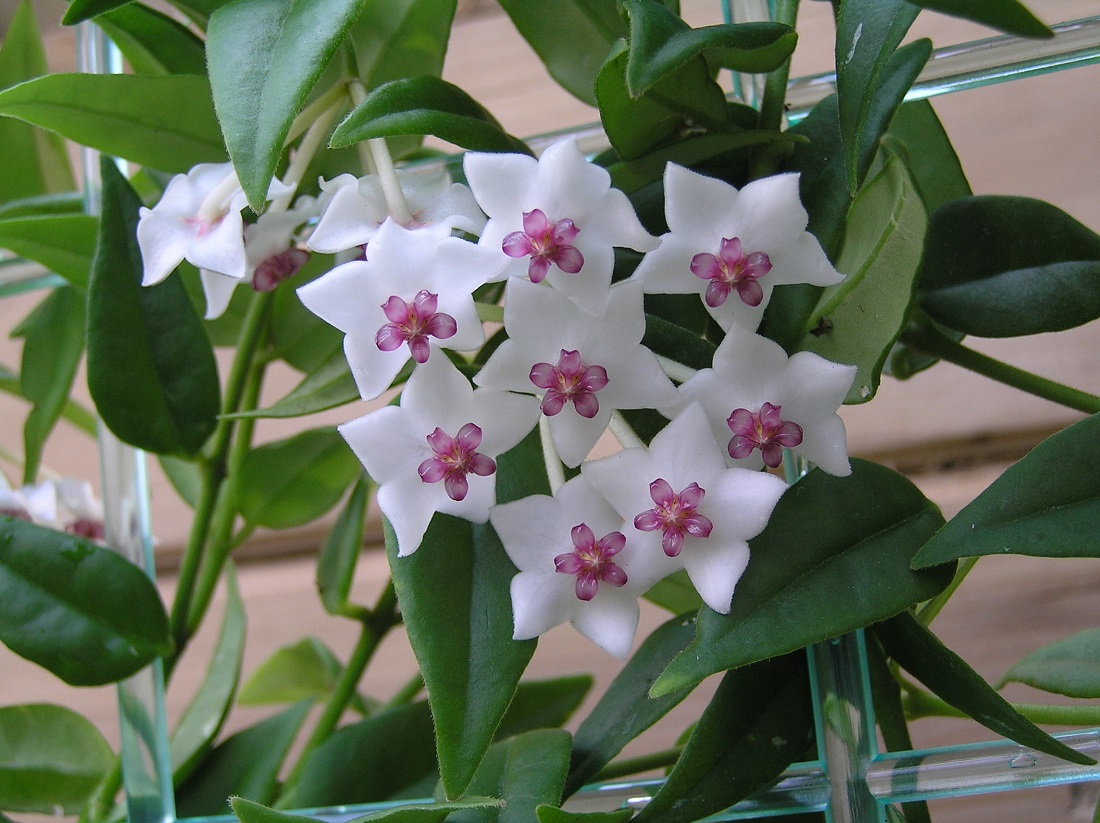All Hoya varieties rightfully have their own fan base. But the Bella species is perhaps the best choice if you are looking for a small, ornamental plant to add to your home. This lovely plant has a few special needs but nothing that is too complicated or exotic.
If you just bought your first Bella or you are doing research to see if this is the right leafy pet for you, then our care guide is the best place to start!
Table of Contents
Origins and Appearance
Hoya Bella is native to a large territory that stretches from the Himalayas to northern Burma. The first Westerner to come across the plant was the Cornish botanist Thomas Lobb who found specimens near the Burmese city of Moulmein.
Also called the miniature wax plant, the Bella variety is known for its long, trailing stems. They give a lovely cascading effect when the plant lives in a hanging basket. Hoya Bella has small leaves that are slightly succulent and the flowers are small and fragrant. The blooms, which grow in tight clusters, also resemble white stars with a purple centre. The plant is fast-growing and once it reaches maturity, it can measure between 2 and 3 feet.
Temperature and Humidity
To keep your glossy Bella happy, light is very important. These plants do not fare well in direct sunlight. Instead, they prefer dappled shade. If you don’t have a spot in your home or garden with dappled shade, then you can also place your plant in an area where there is plenty of indirect sunlight.
If you are lucky enough to own a variegated Bella, then its needs are slightly different. In order to keep their gorgeous stripes, they prefer more light than the all-green Bellas. Even so, never put this plant in direct sunlight.
The Hoya Bella variety can live in different types of climates but it will flourish when the temperature is between 70 and 80 degrees Fahrenheit (21 to 26 degrees Celsius). As a tropical plant, it also loves high humidity. Aim for 60 percent but never allow the humidity to fall below 40 percent. If your region has low humidity, consider investing in a humidifier to keep your little wax plant happy and healthy.
Watering and Feeding

Water With Care
If you are familiar with other Hoya varieties, then you already know that they like to dry out before you offer them a drink. Hold that thought before you act on it. Little Bella is different.
The miniature wax plant prefers moist soil and might show adverse effects if you treat it like other hoyas. In other words, ensure that your Bella never dries out. This is a fine line to walk. Give too little water and the plant might suffer a degree of damage. Give it too much water and you risk root rot. Test the soil with your finger to gauge the wetness of the soil. If the soil appears too wet, wait a few more days.
Feed With Care
Hoya Bella is not a hungry plant. You only have to feed it during the growing season which is spring and summer. Fertilize once a month and for the best results, use an organic product that won’t harm your plant. We recommend fish emulsion as it is packed with nutrients and unable to burn your Bella, no matter how much you use.
A word of caution, over-feeding is not a good idea with this variety. It can actually damage the Hoya. Once in spring and once in summer – and your Bella is satisfied for a long time!
Soil and Repotting

Airy Soil Is Best
Alright, you already know that Hoya Bella adores moist soil. But what type of potting mix is the best for this plant? All Hoya species are epiphytes, plants that grow on trees and not on the ground like most other foliage. For this reason, your little wax plant prefers a loose potting mix that is airy and exceptionally well-draining. A good choice is regular potting soil blended with bark and lots of perlite.
Repot Only When Necessary
Most other house plants are okay when you repot them once a year – or even on a whim every few months. Bella Hoya is not part of that crowd! It can actually thrive when it becomes a little rootbound and since its root system is delicate, frequent and unnecessary repotting can severely damage the plant.
When you decide to repot your miniature wax plant, hold off until it is done blooming. Only repot Bella during its growing months (in other words, when it is spring or summer). Choose a larger pot with plenty of drainage holes. But how do you know when it is the right time to repot?
Signs that you need to replace the container include:
- Roots are pushing through the drainage holes.
- Growth is suddenly stunted.
Get all the best tips on how to re-pot your house plants.
Pruning
If pruning is a chore you hate, then the Hoya Bella is your new best friend. This plant requires no pruning in order to stay healthy. That being said, a snip here and there can encourage new growth. Pruning can also be useful when you want to remove unsightly and leggy vines (keep in mind that these form when the plant needs more sunlight).
Avoid over-pruning your Bella as this can shock the plant. Always use clean scissors or blades to avoid transmitting a plant disease or infection to your Hoya Bella. And speaking of which…
Pests and Diseases
Hoya Bella is a hardy plant but like all other house plants, it can get its fair share of unwelcome visitors and sick days. Let’s have a quick look at the most common problems that affect the miniature wax plant.
Common Pests
When you notice insect-like goobers partying on your Bella, the chances are that you are looking at aphids, mealybugs or spider mites. All three can be treated with a high-quality, organic insecticide.
- Aphids are bright green insects that cluster together on stems, new growth or the underside of leaves.
- Mealybugs look like white, powdery creatures. The biggest sign of their presence is a cottony substance on stems and leaves.
- Spider mites are arachnids that leave webs, cause discolored leaves and their colonies commonly appear on the underside of leaves.
Common Diseases and Problems
All fungal diseases below can be treated in the early stage with a quality fungicide but if your plant is badly affected, it might be better to get rid of it entirely.
Overwatering – Signs include leaves that are turning yellow. The plant can also shed more leaves than normal.
Underwatering – The leaves appear wrinkled or shrivelled.
Botrytis Blight – A fungal disease that leaves gray areas on leaves. The latter can also wrinkle or turn mushy.
Stem and Root Rot – By the time you notice the effects of root rot, it is already too late to save the plant. The best course of action is prevention and this includes not overwatering the plant.
FAQ
Q: Can I Propagate Hoya Bella At Home?
Yes, you can propagate your hoya at home. A good technique is water propagation. Choose a healthy vine with a couple of leaves. Using clean scissors take a cutting just below a node. The node is where the new roots will grow from.
Q: Is Hoya Bella Safe Around Pets and Kids?
The Hoya Bella variety is not considered dangerous to pets or kids. However, the plant is not completely safe. When consumed, it might not be fatal but it can still make a dog or cat very ill. If you have pets or young children, place your miniature wax plant well out of reach.
Q: What Does Hoya Bella Smell Like?
The Hoya Bella variety has a sweet fragrance. You can look forward to smelling this lovely scent most strongly in the evening.
Q: Is Hoya Bella Rare?
The normal variety is not considered a rare plant. However, an amazing discovery happened in 2007 when a Hoya Bella was found to have all-white flowers (normally white and purple). While this new and rare version has the same care instructions it can be very difficult to propagate.
Q: Why Is My Hoya Bella Dying?
There are plenty of reasons why this might be happening. However, the most common reason why owners lose a Bella is overwatering.

